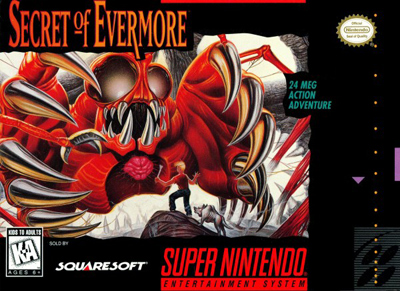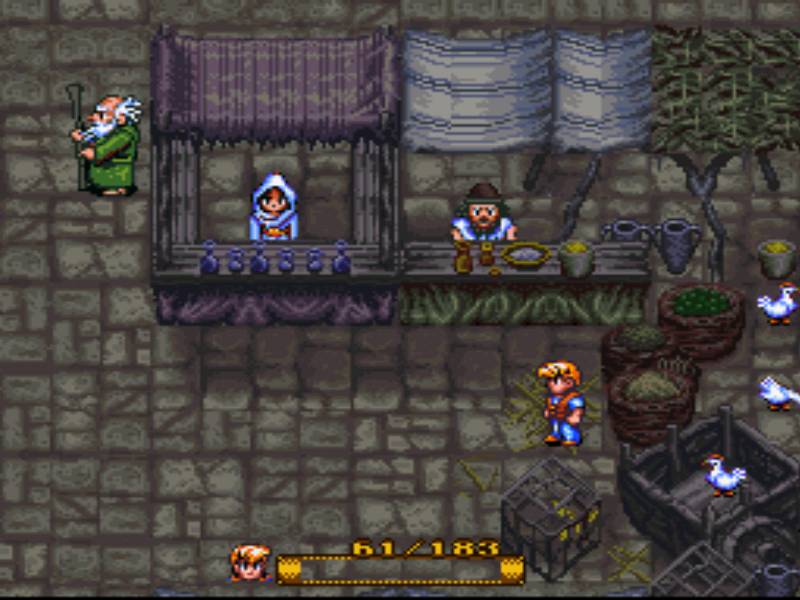This post has not been edited by the GamesBeat staff. Opinions by GamesBeat community writers do not necessarily reflect those of the staff.

"If it's not Japanese, it sucks" isn't a new sentiment; it was around even during the SNES days, holding the same validity then that it does now: none. Poor Secret of Evermore was a victim of that shortsighted mentality, which is a damn shame: it's a rock solid and ambitious RPG.
But ambition isn't always sound, and in attempting to address the age old question of "how come every place in RPG worlds accepts the same currency," Secret of Evermore only unnecessarily complicates matters.
Secret of Evermore sees a boy and his dog from fake real world small town Podunk USA get drawn into the fantastic world of Evermore. The boy, who has no canonical name I'm aware of (the player decides), travels across four distinct regions: Prehistoria, Antiqua, Gothica, and Omnitopia. Each has its own form of currency: talons, gems, coins, and credits, respectively.

Man I sure hope Noah, Mary, and Joseph will take these disease-ridden dinosaur talons as payment.
"Well that sure is pretty flippin' spiffy!" you exclaim. And the novelty certainly is there… until you reach the first currency exchanger, who simultaneously defeats the purpose of the entire system — since you can, and should, just trade for whatever local currency you need — while introducing a layer of tedium to the boy's financial planning.
And that tedium is not welcome, because it's just the first layer threatening to ruin a completionist's day.
Not too long into his journey, the boy encounters a marketplace where he can trade the currency of the day (gems) for rice. Which begins a crazy long — though optional — side quest involving trading that rice for tapestries, decorative trinkets, and other goods eventually leading to always-active inventory items that buff the boy's combat prowess.
These treasures are the real goal behind the extensive trading system, but to get them all — especially the coveted Silver Sheathe — you'll need either a walkthrough or the foresight to stock up on plenty of the various trade goods from said marketplace. Because this particular side quest involves another marketplace the next region over, and it doesn't barter in some of the things you could get from the first (like Amulets of Annihilation).

What do you suppose the exchange rate is for giant heat sinks, <INSERT NAME OF DOG HERE>?
Not to be outdone by its non-combat counterpart, a core component of Secret of Evermore's combat system — alchemy, this game's magic equivalent — involves combining various ingredients and quantities to produce the quintessential attack, healing, and support spells. That's right, yet more currency, and spell selection depends largely at what's readily available. Alchemy really makes one miss the elegance of MP.
And that's really the meat of the in-game currency issue: elegance. Accessibility. Sure, it may not make sense that the denizens of Lavos's post apocalyptic future accept the same money as the Kingdoms of Zeal and Guardia, or that World of Warcraft's otherworldly Ethereal merchants care about Azeroth's mere gold, silver, and copper pieces. But at the end of the day, all that matters is there being some quantifiable unit you can trade set numbers of for something you can use.
That said, don't let Secret of Evermore's multiple currencies scare you away. There's a good game here. Just have a walkthrough and some patience handy if you intend to grab everything on your first playthrough.
Screenshots from GiantBomb's archive.
Carlos Alexandre is a self-described handsome fat man. He ponders his entertainment, and you can find said ponderings on both his website and the podcast he co-hosts.
